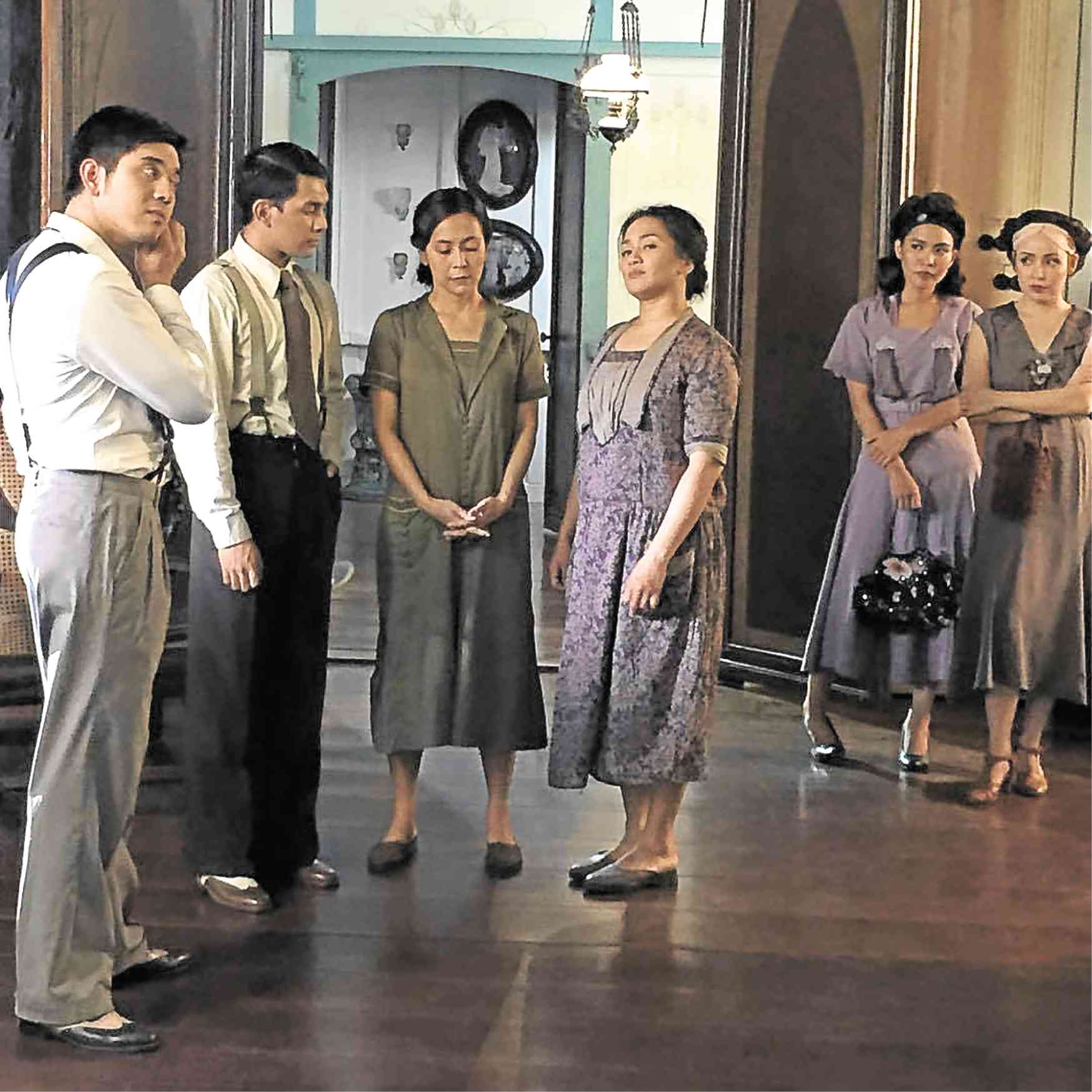Through the years and decades, we’ve enjoyed and appreciated Nick Joaquin’s play, “A Portrait of the Artist as Filipino,” in its various incarnations. We were introduced to it by Lamberto Avellana’s black-and-white film in its original English text, starring Daisy Hontiveros-Avellana and Naty Crame-Rogers. Then came Peta’s Filipino stage version of “Ang Larawan,” with Lolita Rodriguez and Rita Gomez.
In the ’90s came the stage musical version, with script and direction by Rolando Tinio, and music composed by Ryan Cayabyab, starring Celeste Legaspi and Zsa Zsa Padilla.
And, most fortuitously, on Dec. 25, Loy Arcenas’ film of the musical version of “Ang Larawan” will be screened as one of the eight official entries in the 2017 Metro Manila Film Festival.
Ever since we first learned about the film musical’s production, we’ve been urging film buffs to watch for it, sight unseen—because we loved the stage musical and believe that Arcenas is the best choice of director to “translate” it to the big screen.
It was a risk on our part, but we took it because we believed in the topnotch artists involved in the 2017 production.
But, were we being too enthusiastically, blindly, supportive? We caught the finished film’s preview last week—and the great news is, Arcenas’ “Ang Larawan” beautifully and movingly exceeds expectations.
Brash prediction
Recently, we made the brash prediction that it would win the MMFF’s Best Picture plum—and the film we saw in preview recently only served to bolster that optimistic opinion.
The superlative merits of Joaquin’s script, Tinio’s translation, adaptation and lyrics, and Cayabyab’s music have already been extolled through the years, so we should instead focus on the filmic plus points added to the equation by Arcenas and his cinematic colleagues:
First, the film has a lovely, ruefully evanescent and yet lived-in look. Yes, the filmed drama is about the irretrievable past, but its locales and characters are detailed and real.
This is a difficult mix for period films to achieve, so Arcenas and his team should be specifically cited for it.
Next, Arcenas is able to transform the occasionally slow and tendentious script, originally written for the stage, into a crisply eventful film narrative, adroitly using close-ups, tightening and contrasts to keep the storytelling going.
The dynamic and heartfelt portrayals he’s able to elicit from his cast of generally superlative actors contribute a lot in this regard, because they emotionally energize what could otherwise have been some slow or tendentious moments.
The fact that the film is a musical doubles the performing requirements for the members of the cast, who have to come up with standout acting and singing feats.
As recent flubs like the “Les Miz” musical film have embarrassingly shown, this is a really tall order. So, it’s heartening to note that “Ang Larawan” cannily avoids this pitfall, by more astutely suiting the singer to a specific vocal performance requirement.
Since she performs more often abroad than in these parts, the film musical’s most rewarding revelation is Joanna Ampil’s musical and thespic portrayal of Candida.
But, the production showcases other standout cameo performances as well, paced by Robert Arevalo’s textured, felt and surprisingly well-sung portrayal of the conscience-stricken Don Perico.
Conscience—that’s what “Ang Larawan” is all about, so we thank the production for reminding us of that all-important and essential value and virtue, which has of late been practiced more in the breach than in the observance —“Contra mundum!”
